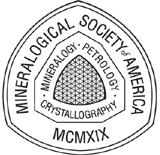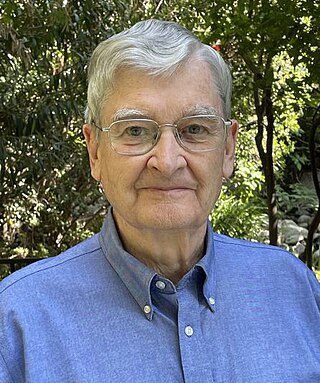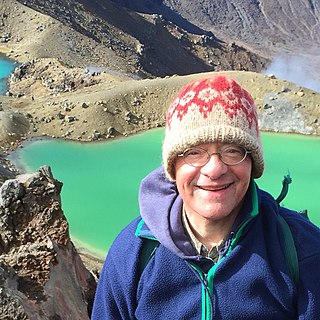
The Mineralogical Society of America (MSA) is a scientific membership organization. MSA was founded in 1919 for the advancement of mineralogy, crystallography, geochemistry, and petrology, and promotion of their uses in other sciences, industry, and the arts. It encourages fundamental research about natural materials; supports the teaching of mineralogical concepts and procedures to students of mineralogy and related arts and sciences; and attempts to raise the scientific literacy of society with respect to issues involving mineralogy. The Society encourages the general preservation of mineral collections, displays, mineral localities, type minerals and scientific data. MSA represents the United States with regard to the science of mineralogy in any international context. The Society was incorporated in 1937 and approved as a nonprofit organization in 1959.

Fractional crystallization, or crystal fractionation, is one of the most important geochemical and physical processes operating within crust and mantle of a rocky planetary body, such as the Earth. It is important in the formation of igneous rocks because it is one of the main processes of magmatic differentiation. Fractional crystallization is also important in the formation of sedimentary evaporite rocks or simply fractional crystallization is the removal of early formed crystals from an Original homogeneous magma so that the crystals are prevented from further reaction with the residual melt.
W. Gary Ernst is an American geologist specializing in petrology and geochemistry. He currently is the Benjamin M. Page Professor Emeritus in Stanford University's department of geological sciences.
Magmatic water, also known as juvenile water, is an aqueous phase in equilibrium with minerals that have been dissolved by magma deep within the Earth's crust and is released to the atmosphere during a volcanic eruption. It plays a key role in assessing the crystallization of igneous rocks, particularly silicates, as well as the rheology and evolution of magma chambers. Magma is composed of minerals, crystals and volatiles in varying relative natural abundance. Magmatic differentiation varies significantly based on various factors, most notably the presence of water. An abundance of volatiles within magma chambers decreases viscosity and leads to the formation of minerals bearing halogens, including chloride and hydroxide groups. In addition, the relative abundance of volatiles varies within basaltic, andesitic, and rhyolitic magma chambers, leading to some volcanoes being exceedingly more explosive than others. Magmatic water is practically insoluble in silicate melts but has demonstrated the highest solubility within rhyolitic melts. An abundance of magmatic water has been shown to lead to high-grade deformation, altering the amount of δ18O and δ2H within host rocks.

George R. Rossman is an American mineralogist and the Professor of Mineralogy at the California Institute of Technology.
Bernard (Bernie) Wood is a British geologist, and professor of mineralogy and senior research fellow at the University of Oxford. He specializes in the thermodynamics of geological systems, using experimental techniques. He is a prominent figure in the field of experimental petrology, having received multiple awards throughout his career and taught at several universities worldwide.

Robert Arbuckle Berner was an American scientist known for his contributions to the modeling of the carbon cycle. He taught Geology and Geophysics from 1965 to 2007 at Yale University, where he latterly served as Professor Emeritus until his death. His work on sedimentary rocks led to the co-founding of the BLAG model of atmospheric carbon dioxide, which takes into account both geochemical and biological contributions to the carbon cycle.

Chemical cycling describes systems of repeated circulation of chemicals between other compounds, states and materials, and back to their original state, that occurs in space, and on many objects in space including the Earth. Active chemical cycling is known to occur in stars, many planets and natural satellites.
Mihir Kumar Bose (1933–2009) was an Indian geologist and a professor at the Presidency College, Kolkata. He was known for his studies on igneous petrology and was an elected fellow of the Geological Survey of India, Indian National Science Academy, and the Indian Academy of Sciences. The Council of Scientific and Industrial Research, the apex agency of the Government of India for scientific research, awarded him the Shanti Swarup Bhatnagar Prize for Science and Technology, one of the highest Indian science awards for his contributions to Earth, Atmosphere, Ocean and Planetary Sciences in 1976.

Mark S. Ghiorso is an American geochemist who resides in Seattle, Washington. He is best known for creating MELTS, a software tool for thermodynamic modeling of phase equilibria in magmatic systems.
Craig E. Manning is a professor of geology and geochemistry in the Department of Earth, Planetary, and Space Sciences at the University of California, Los Angeles, where he served as department chair between 2009 and 2012. Manning's research interests include water chemistry, thermodynamics, gas chemistry, geochemistry, igneous petrology, and metamorphic petrology.
Anat Shahar is a staff scientist at the Earth and Planets Laboratory, Carnegie Institution of Washington and adjunct professor at the University of Maryland. Her work uses high-pressure, high-temperature experiments and stable isotope geochemistry to understand the formation of planets in the Solar System.
Rajdeep Dasgupta is a professor of Earth, Environmental, and Planetary Sciences at Rice University. In his research, he studies the role of subsurface melting and magma on the origin and evolution of the Earth and other terrestrial planets.
Edward Bruce Watson is an American geochemist at Rensselaer Polytechnic Institute in Troy, New York.
Rebecca Ann Lange is a professor of experimental petrology, magmatism and volcanism at the University of Michigan. Her research investigates how magmatism has shaped the evolution of the Earth, as well as the formation of continental crust. She is a Fellow of the Mineralogical Society of America and was awarded the F.W. Clarke Medal in 1995.
Stanley Robert Hart is an American geologist, geochemist, leading international expert on mantle isotope geochemistry, and pioneer of chemical geodynamics.
Carol Denison Frost is an American isotope geologist, petrologist and professor. Her primary research focuses on the evolution of the continental crust and granite petrogenesis. She has spent over thirty-five years investigating the geologic history of the Wyoming Province and the formation and geochemical classification of granite. Other contributions include isotopic fingerprinting of natural waters, including water associated with energy production. She served as Director of the Earth Sciences Division, National Science Foundation, from December 2014 to January 2018.
James Burleigh Thompson Jr. was an American mineralogist and geologist. He was known for his research into the thermodynamics of minerals and the relationship to structure. He introduced the term polysomatic series for describing layered structures with chemically distinct layers.
John Williams Valley is an American geochemist and petrologist. He is an expert on stable isotope geochemistry, especially as applied to understanding the evolution of the Earth's crust.
Hugh Pettingill Taylor Jr. was an American geochemist.





